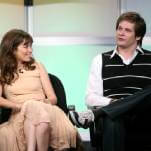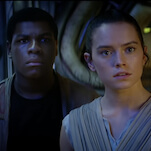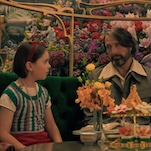Tokyo Olympiad

In recent years, Olympics coverage on television has devoted more and more time to syrupy mini-biographies of select athletes, generally triumph-over-adversity stories designed to glorify the hometown heroes and pump instant melodrama into popular events. Over the entire 170-minute original cut of Tokyo Olympiad—Kon Ichikawa's visually arresting and moving portrait of the 1964 Summer Games—there's only one such segment, yet it epitomizes what makes the film uniquely humane. Ichikawa's subject is 22-year-old runner Ahamed Isa, who comprises exactly half the athletes representing Chad, an emerging African nation ("younger than he is," the narrator notes) making its first appearance at the Olympics. After advancing in the preliminaries, Isa finished a distant seventh (out of eight) in the 800m semifinals. But Ichikawa follows him anyway, from the moment he steps off the plane to his final, solitary meal in the raucous dining hall after the race. In contrast to Leni Riefenstahl's propagandistic masterpiece Olympia, which stuck with the winners and underlined the beauty of the human form, Tokyo Olympiad finds poetry in defeat, when the body reaches the end of its capabilities or simply shuts down from exhaustion. But more than that, Ichikawa cares about the transcendent spirit of the Olympic Games, which at their finest promote a vision of a peaceful and unified world, defying the barriers of nationality and race. Tokyo Olympiad opens and closes with a blazing red sun in the middle of a Cinemascope frame, a near-perfect illustration of the Japanese flag and seemingly one of the few occasions for overt patriotism in the film. But in a 1992 interview on the superb new Criterion DVD (which also includes an illuminating commentary track by film scholar and Olympics buff Peter Cowie), Ichikawa offers a different interpretation. To him, "The sun shines over everyone and everything," making it a natural symbol of the Olympic ideal and an important gesture from Japan to the world. With more than 150 cameras at their disposal, Ichikawa and his crew didn't set out to document the games for history so much as to capture the particular essence of each event. Sometimes, they don't even mention the winner, and at other times, the cameras are so preoccupied with the goings-on before and after a race that the event itself seems like an afterthought. Ichikawa's choices are often strikingly idiosyncratic: In the 100m dash, he focuses on the tense labor of nailing down the blocks and the steady pounding of feet on the track. In the women's 80m hurdles, he drops out all sound except for a lone hurdle clanking against the ground. In shooting, he catches long close-ups of steady, unblinking eyes. The director's insistence on telephoto lenses, which zero in on minute details at the expense of the larger picture, pays off in the famous marathon sequence, with its unforgettable shots of agonized faces and battered, bloody feet. None of Tokyo Olympiad would be useful for television, because it forsakes coverage for artistry, and for this reason, the International Olympics Committee has since commissioned the more workmanlike highlight films of directors like Bud Greenspan. For all their ideological differences, Riefenstahl and Ichikawa make clear what the IOC has forgotten: The Games are more important than the games.








































